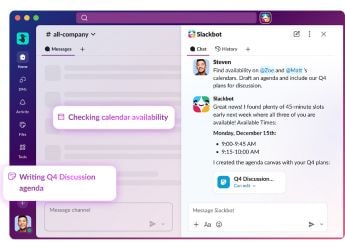- Home
- Telecom
- Telecom Features
- New Telecom Policy Is Here but What About the Previous One?
New Telecom Policy Is Here but What About the Previous One?
In July, Telecom Commission approved a new telecom policy, namely National Digital Communications Policy 2018 (NTP 2018). The telecom policy 2018 aims to accomplish objectives like "broadband for all", 4 million additional jobs in telecom sector, and millions of public Wi-Fi hotspots. However, before expecting anything from a new policy, it is necessary to analyse what happened to the previous policy and the extent of its implementation.
It was six years ago that the Department of Telecommunications (DoT) brought in National Telecom Policy 2012 (NTP 2012) at a time when the once booming telecom sector had turned sluggish owing to the alleged "2G scam". Several goals including increasing number of broadband connections, national mobile number portability, and increasing rural tele-density, were listed in the policy document. What happened to those objectives and how far have we come? Let's look at some of the major points.
Minimum broadband download speeds are minimal
As stated in the telecom policy 2012 document, DoT aimed at increasing then existing minimum broadband download speeds of 256Kbps to 512Mbps and subsequently to 2Mbps by 2015 and at higher speeds of at least 100Mbps thereafter. After 2 years, minimum speeds were revised to 512Kbps, though a four times faster Internet experience of 2Mbps, expected by 2015, still remains far from being achieved.
On the other hand, our neighbour Bangladesh enjoys 10 times faster Internet with minimum broadband speeds being 5Mbps. United States defines broadband with minimum speeds 50 times higher than India as in 2015, the US Federal Communications Commission changed the definition of broadband by raising the minimum download speeds of 4Mbps to 25Mbps.
India Shows Marked Improvement in Fixed Broadband Speeds: Ookla
Rural tele-density asking for efforts
The department had set a target of achieving 70 percent rural tele-density by 2017 and of 100 percent by 2020 considering the importance of connectivity in the villages. But according to TRAI's data, overall rural tele-density (wireless + wireline) stood at 57.18 percent at the end of May 2018. In sharp contrast, urban tele-density stood at 156.49 percent. Looking at these numbers, achieving target of 100 percent rural tele-density by 2020 seems difficult.
When wireless and wireline subscribers are looked at separately, it appears that the urban-rural divide is more apparent when it comes to wireline connectivity. There are 505 million (44.7 percent of total wireless connections) rural wireless subscribers compared to 626 million urban ones. On the other hand, there are just 3.3 million (14.7 percent of total wireline connections) rural wireline subscribers compared to 19.2 million urban subscribers. This brings us to the next objective.
Optical fibre network to village panchayats behind halfway mark
Project of laying optical fibre in all 2.5 lakh village panchayats was listed as one of the goals of NTP 2012. The telecom policy read, "Optical fibre network will be initially laid up to the village panchayat level...Extension of optical fibre connectivity from village panchayats to be taken up progressively to all villages and habitations."
The project, originally called "National Optical Fibre Network", had just been launched in October 2011 and was expected to be completed by December 2013. Later it was delayed till September 2015. Deadline had to be changed again to December 2016 - when the project was also rechristened BharatNet - and later to March 2019.
According to the latest data by Bharat Broadband Network Ltd, a telecom infrastructure provider under DoT, optical fibre networks were service ready in 1.13 lakh out of 2.5 total village panchayats in India as of 15 July, 2018. With less than 9 months left, remaining 1.37 lakh village panchayats are yet to be connected with the cables.
In January 2018, Telecom Secretary Aruna Sundararajan had hoped remaining villages will be connected well in time by December 2018 before the deadline of March 2019.
Prolonged wait for high-quality voice and data services
Arguably one of the most important objectives of NTP 2012 was to "deliver high quality seamless voice, data, multimedia and broadcasting services". While Telecom Regulatory Authority of India (TRAI) has clamped down on telecom operators for call drops, it remains a major concern among consumers. According to survey conducted by LocalCircles across 200 districts by collecting 12,000 votes results of which were published in April this year, 1 in 5 people said 50 percent of their calls either drop or have connection issues. 35 percent respondents said 20 to 50 percent of their calls have these issues and only 11 percent said they do not face any issue.
This is despite TRAI introducing more stringent quality of service benchmarks and asking telcos to abide by the new rules which came into effect from 1 October, 2017. Under the new rules, call drops are being monitored at mobile tower level instead of telecom circle level.
As for data services, India's performance doesn't seem impressive either. India was ranked 61st for fixed line broadband speeds in Ookla's Speed Test Global Index for July 2018. India's average download speeds stood at 23.93Mbps which was nearly half of the global average of 46.4Mbps.
In terms of mobile Internet speeds, India ranked 113th in with average download speeds of 9.14Mbps. This was less than half of the global average of 22.2 Mbps.
Neighbouring countries, China (37th), Sri Lanka (79th), and Pakistan (102nd) fared better than India in mobile Internet rankings. However, only China (19th) ranked above India in terms of fixed broadband speeds.
Broadband connections goal fulfilled
One of the objectives that the department was able to achieve was the number of broadband connections. Aim was to achieve overall 175 million broadband connections by 2017 and 600 million by 2020. TRAI data shows that in May 2018, number of broadband subscribers (wireless + wireline) stood at 432 million out of which, 414 million are wireless subscribers. It is clear that the aim of crossing 600 million subscribers will be fulfilled with ease. Such massive growth can be attributed to the launch Reliance Jio and the subsequent tariff wars. Jio alone had 186.6 million of the total broadband customers at the end of March 2018.
IPv6, National MNP, and Free national roaming
Transition towards IPv6 has been a work in progress in all parts of the world. Its need was felt when IPv4, a 36-year-old number-based IP (Internet Protocol) address system that enables devices to communicate with each other on the Internet, started running out of addresses. India aimed for "substantial" transition to IPv6 by 2020, according to the policy.
In India, IPv6 is currently being used for roughly 32 percent of overall Internet traffic according to Google. That's largely because of Reliance Jio which accounts for nearly 70 percent of country's IPv6 traffic. Almost 90 percent of Jio subscribers are using IPv6. India leads the world when it comes to IPv6 capable rate (57 percent) according to APNIC, the Regional Internet address Registry for the Asia-Pacific region.
Government also wanted to "achieve One Nation - Full Mobile Number Portability and work towards One Nation - Free Roaming". National mobile number portability (MNP) was rolled out from 2011, however, it was nationally rolled out in July 2015. Free national roaming varies across operators with Airtel leading the chart. Its customers can roam across the country free of extra cost. Reliance Jio also offers free roaming but only to its Prime customers. Here, it is worth noting that almost all of its customers are subscribed to Jio Prime. Vodafone and Idea Cellular, both have dipped their toes but they only provide free incoming while roaming.
National Telecom Policy 2018
DoT has now approved a new policy which lists seven goals with a deadline of 2022, the year India will complete 75 years as an independent nation.
These include universal broadband coverage at 50Mbps for every citizen, 1Gbps connectivity for all Gram Panchayats of India by 2020 and 10 Gbps by 2022, fixed line broadband access to 50 percent of households, deployment of public Wi-Fi Hotspots to reach 5 million by 2020 and 10 million by 2022, among others.
Hanish Bhatia, Senior Analyst at Counterpoint Research believes that achieving the set targets can be difficult in a country as vast and diverse as India. "To realise the full potential of telecom sector, greater participation of private sector is critical and a partnership between government and private players is required," says Bhatia. He also emphasised that the growth of 5G, Artificial Intelligence (AI), Machine Learning (ML), and Internet of Things (IoT) is imminent and government should be prepared for it. "A separate body should be constituted to oversee and regulate newly developing areas like 5G, AI, ML and IoT," he adds.
NTP 2018 has mentioned that one of its missions is "to harness the power of emerging digital technologies, including 5G, AI, IoT, Cloud and Big Data to enable provision of future-ready products and services".
Bhatia said that while targets like rural tele-density, minimum broadband speeds, and optical fibre cable to every village panchayats are yet to be achieved, there have been achievements in other areas like number of broadband connections, MNP, free roaming, etc. DoT might have missed out on some of the objectives but better results can be expected from the new telecom policy, the analyst believes.
Catch the latest from the Consumer Electronics Show on Gadgets 360, at our CES 2026 hub.
- Samsung Galaxy Unpacked 2025
- ChatGPT
- Redmi Note 14 Pro+
- iPhone 16
- Apple Vision Pro
- Oneplus 12
- OnePlus Nord CE 3 Lite 5G
- iPhone 13
- Xiaomi 14 Pro
- Oppo Find N3
- Tecno Spark Go (2023)
- Realme V30
- Best Phones Under 25000
- Samsung Galaxy S24 Series
- Cryptocurrency
- iQoo 12
- Samsung Galaxy S24 Ultra
- Giottus
- Samsung Galaxy Z Flip 5
- Apple 'Scary Fast'
- Housefull 5
- GoPro Hero 12 Black Review
- Invincible Season 2
- JioGlass
- HD Ready TV
- Laptop Under 50000
- Smartwatch Under 10000
- Latest Mobile Phones
- Compare Phones
- Samsung Galaxy A07 5G
- Vivo Y500i
- OnePlus Turbo 6V
- OnePlus Turbo 6
- Itel Zeno 20 Max
- OPPO Reno 15 Pro Mini 5G
- Poco M8 Pro 5G
- Motorola Signature
- Lenovo Yoga Slim 7x (2025)
- Lenovo Yoga Slim 7a
- Realme Pad 3
- OPPO Pad Air 5
- NoiseFit Pro 6R
- Xiaomi Watch 5
- Acerpure Nitro Z Series 100-inch QLED TV
- Samsung 43 Inch LED Ultra HD (4K) Smart TV (UA43UE81AFULXL)
- Asus ROG Ally
- Nintendo Switch Lite
- Haier 1.6 Ton 5 Star Inverter Split AC (HSU19G-MZAID5BN-INV)
- Haier 1.6 Ton 5 Star Inverter Split AC (HSU19G-MZAIM5BN-INV)












